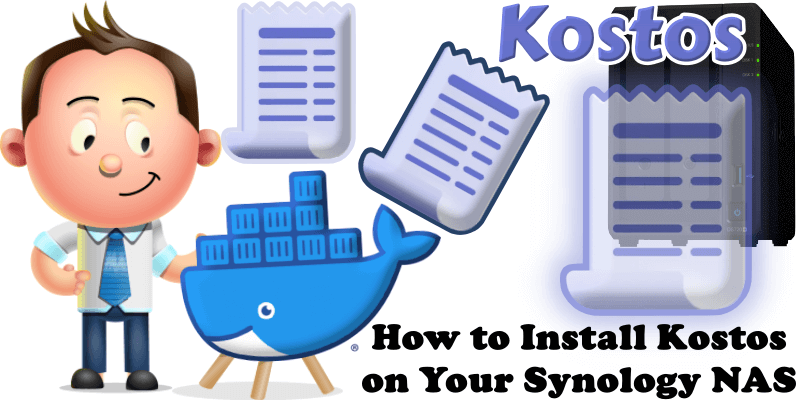
Kostos is a minimalist budgeting app designed for simplicity and ease of use. It allows users to track expenses, set budgets, and visualize spending patterns through a clean, intuitive interface. Built with modern web technologies, it emphasizes privacy and offline functionality, making it ideal for personal finance management on the go. In this step by step guide I will show you how to install Kostos on your Synology NAS using Docker & Portainer.
STEP 1
Please Support My work by Making a Donation.
STEP 2
Install Portainer using my step by step guide. If you already have Portainer installed on your Synology NAS, skip this STEP. Attention: Make sure you have installed the latest Portainer version.
STEP 3
Go to File Station and open the docker folder. Inside the docker folder, create one new folder and name it kostos. Follow the instructions in the image below.
Note: Be careful to enter only lowercase, not uppercase letters.
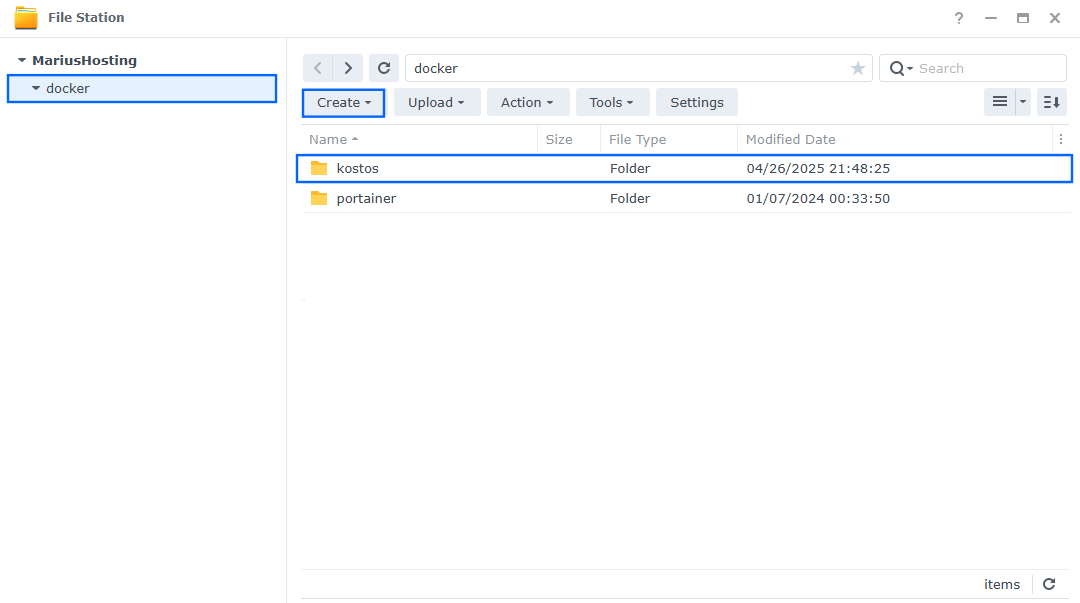
STEP 4
Download (click on the blue link below) and upload the kostos.db file below in the kostos folder that you have previously created at STEP 3. Follow the instructions in the image below. 🔒Note: Support my work to unlock the password. You can use this password to download any file on mariushosting forever!
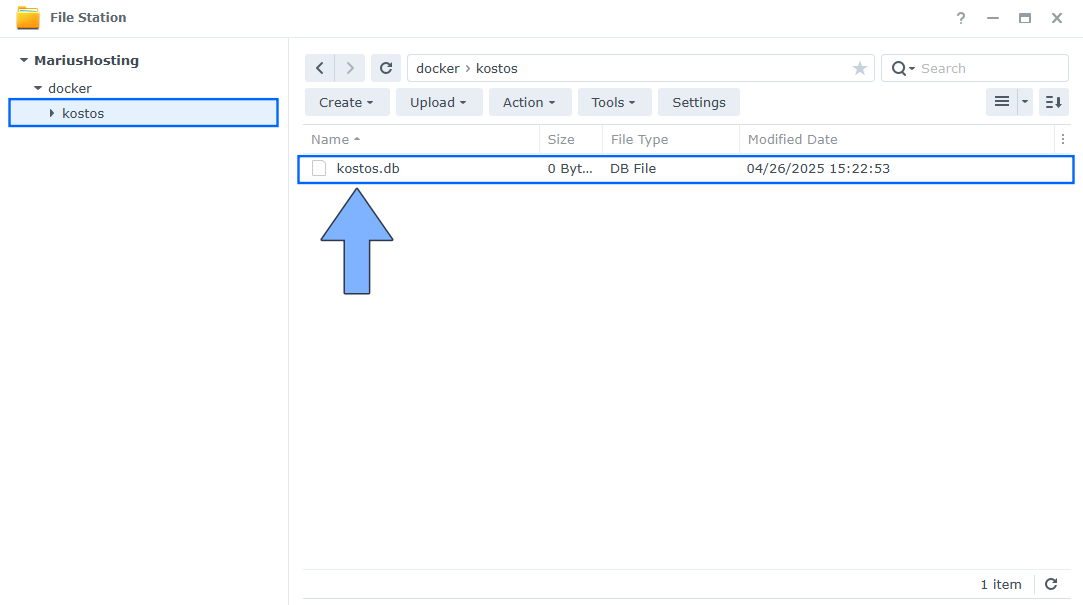
STEP 5
Log into Portainer using your username and password. On the left sidebar in Portainer, click on Home then Live connect. Follow the instructions in the image below.
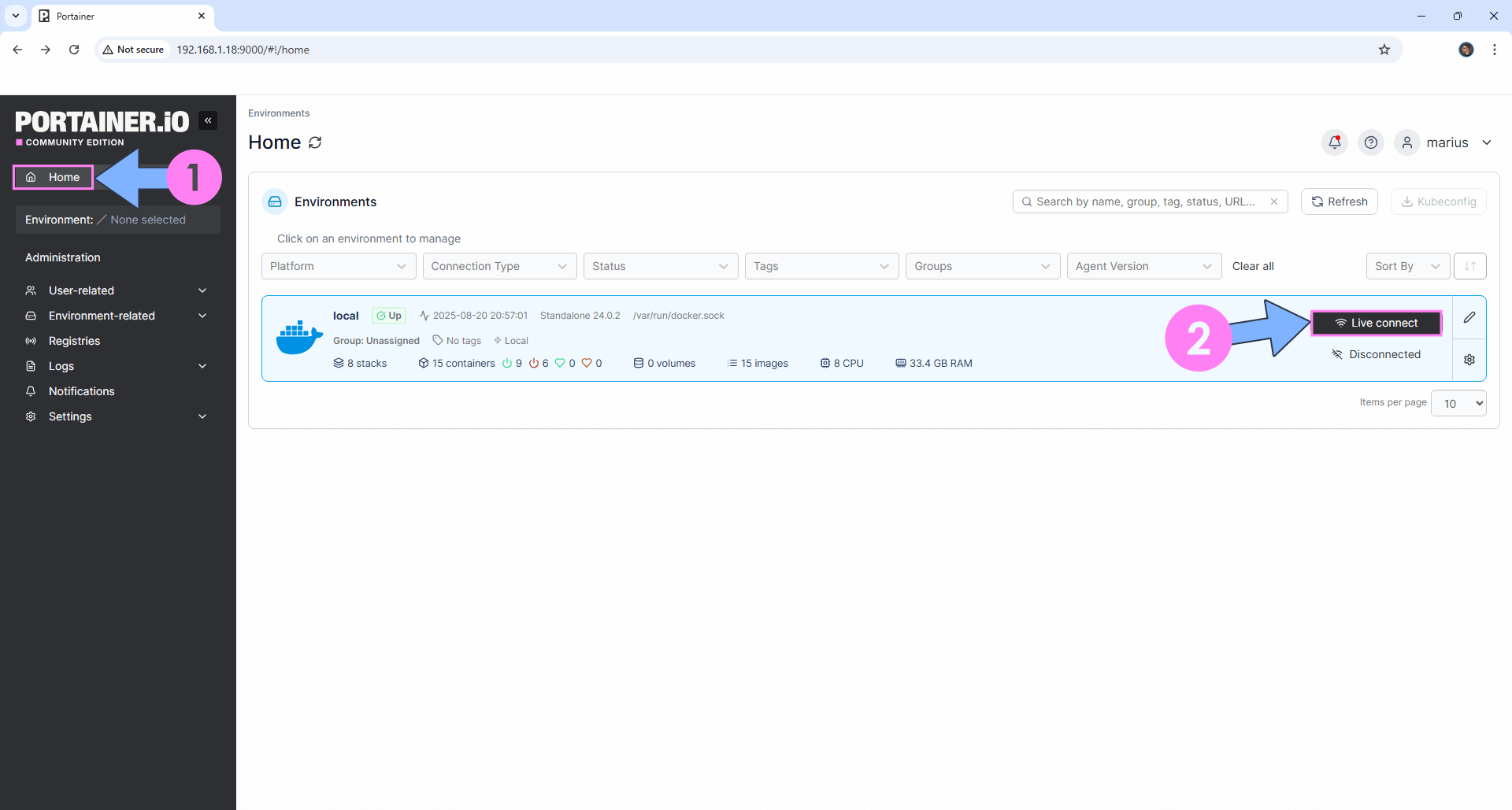
On the left sidebar in Portainer, click on Stacks then + Add stack. Follow the instructions in the image below.
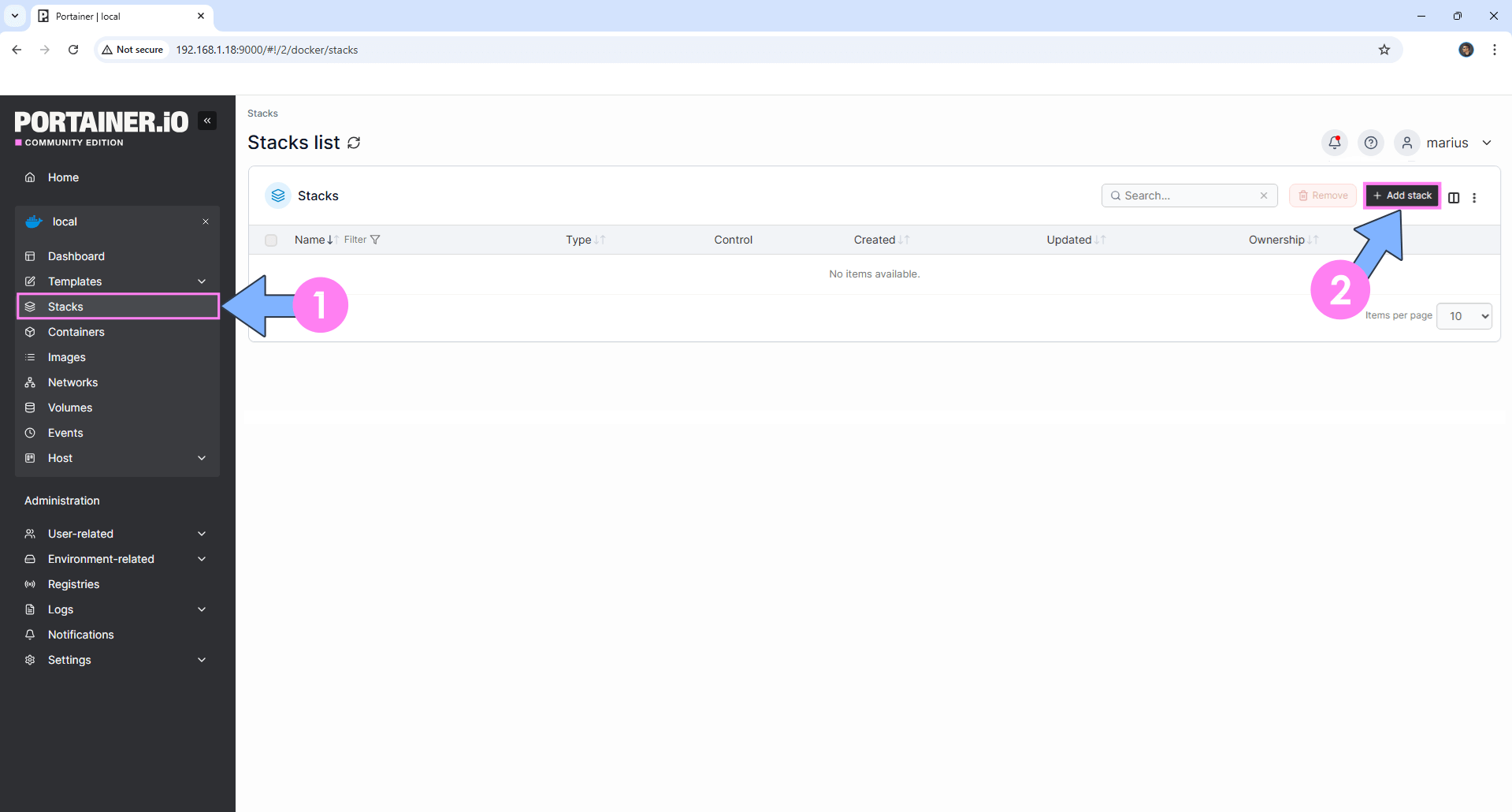
STEP 6
In the Name field type in kostos. Follow the instructions in the image below.
services:
kostos:
image: ghcr.io/shynewt/kostos:latest
container_name: Kostos
security_opt:
- no-new-privileges:true
healthcheck:
test: ["CMD-SHELL", "nc -z 127.0.0.1 3000 || exit 1"]
interval: 10s
timeout: 5s
retries: 3
start_period: 90s
restart: on-failure:5
ports:
- 3325:3000
volumes:
- /volume1/docker/kostos/kostos.db:/app/kostos.db:rw
command: sh -c "npm run db:migrate && npm start"
environment:
NODE_ENV: production
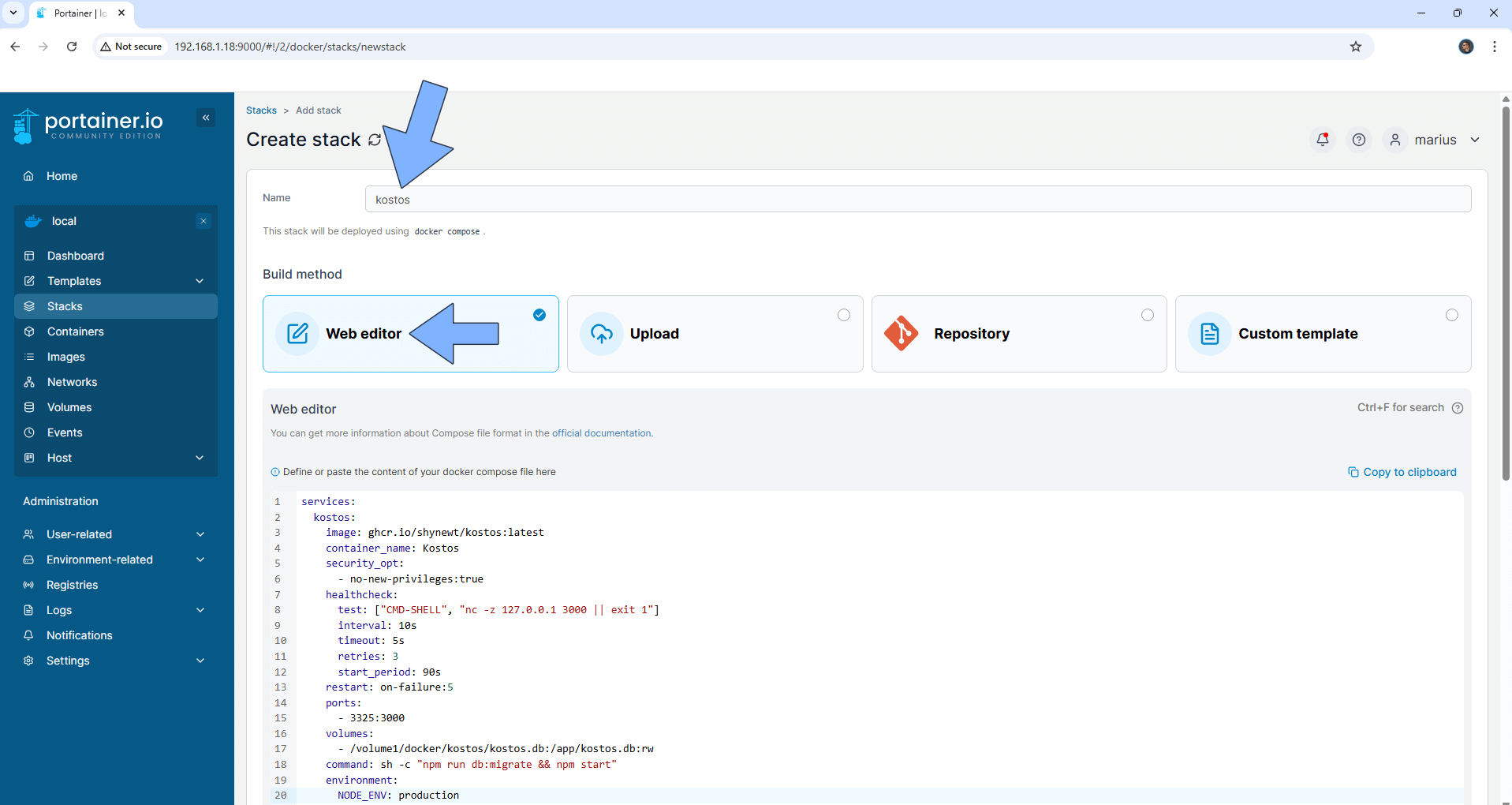
STEP 7
Scroll down on the page until you see a button named Deploy the stack. Click on it. Follow the instructions in the image below. The installation process can take up to a few minutes. It will depend on your Internet speed connection.
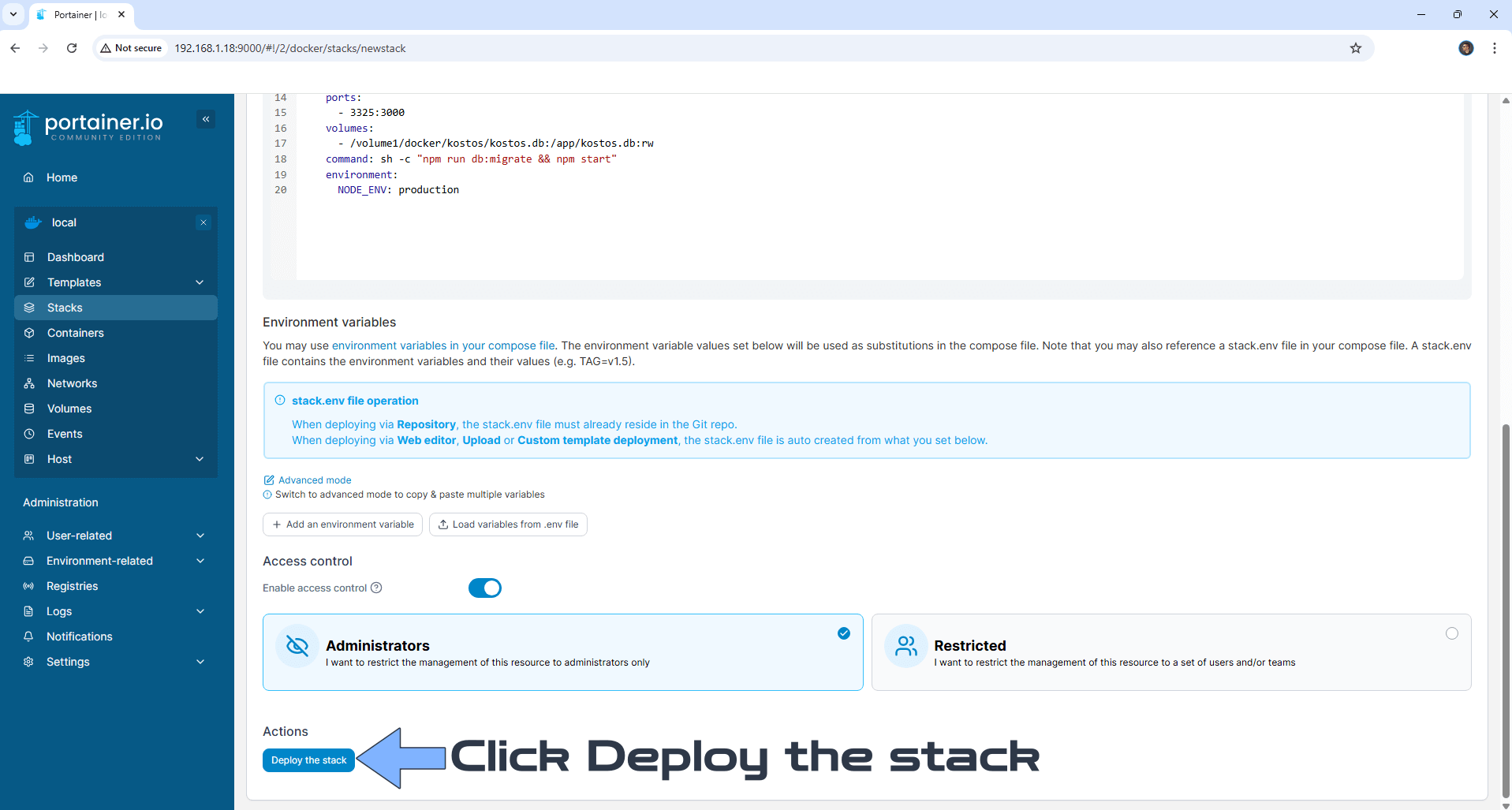
STEP 8
If everything goes right, you will see the following message at the top right of your screen: “Success Stack successfully deployed“.
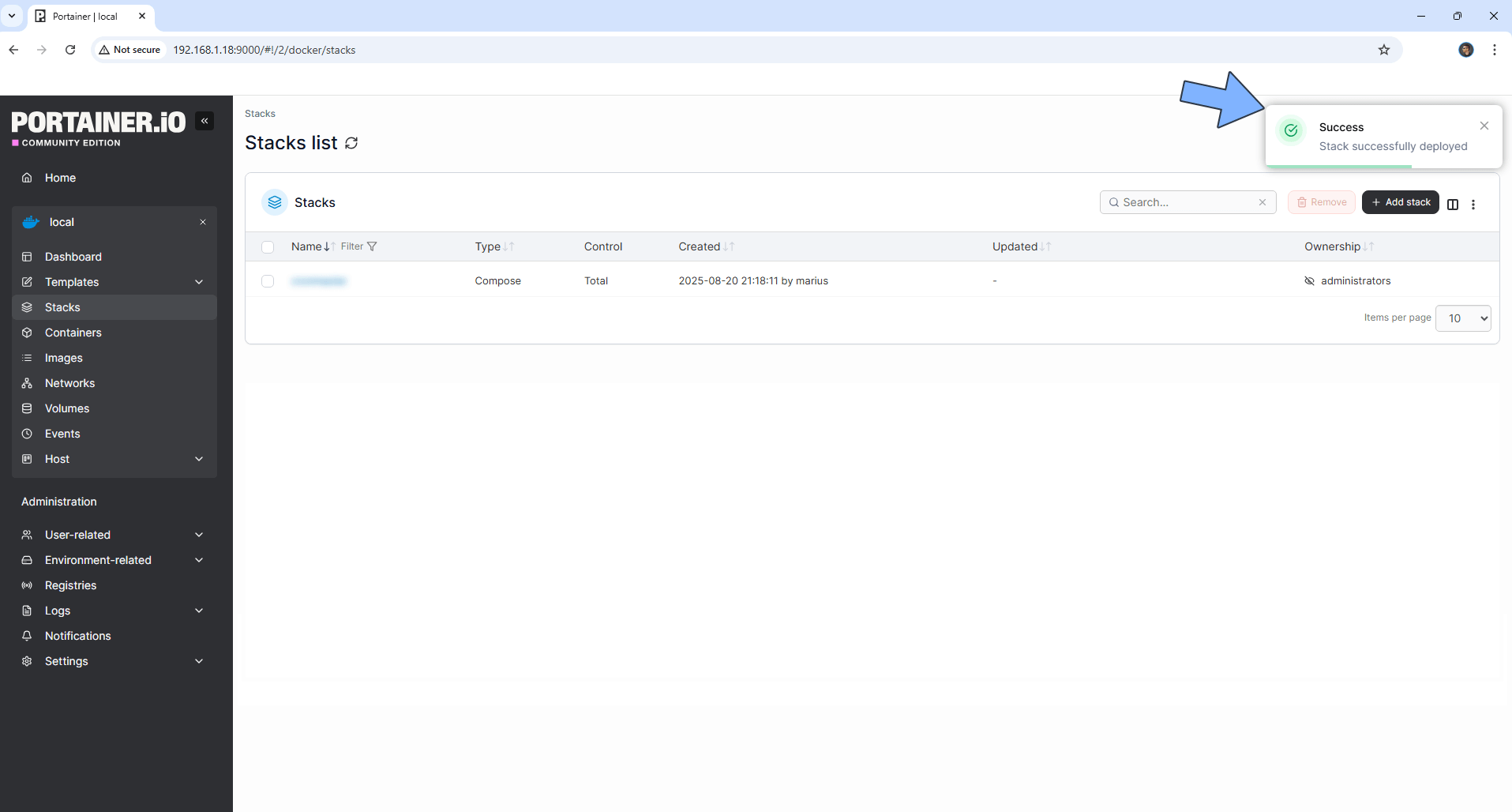
STEP 9
Please Support My work by Making a Donation. Almost 99,9% of the people that install something using my guides forget to support my work, or just ignore STEP 1. I’ve been very honest about this aspect of my work since the beginning: I don’t run any ADS, I don’t require subscriptions, paid or otherwise, I don’t collect IPs, emails, and I don’t have any referral links from Amazon or other merchants. I also don’t have any POP-UPs or COOKIES. I have repeatedly been told over the years how much I have contributed to the community. It’s something I love doing and have been honest about my passion since the beginning. But I also Need The Community to Support me Back to be able to continue doing this work.
STEP 10
The installation process can take up to a few seconds/minutes. It will depend on your Internet speed connection. Now open your browser and type in http://Synology-ip-address:3325 Click Create Project. Follow the instructions in the image below.

STEP 11
Create your project. Add Icon, Name, Currency and Members then click Create Project. Follow the instructions in the image below.
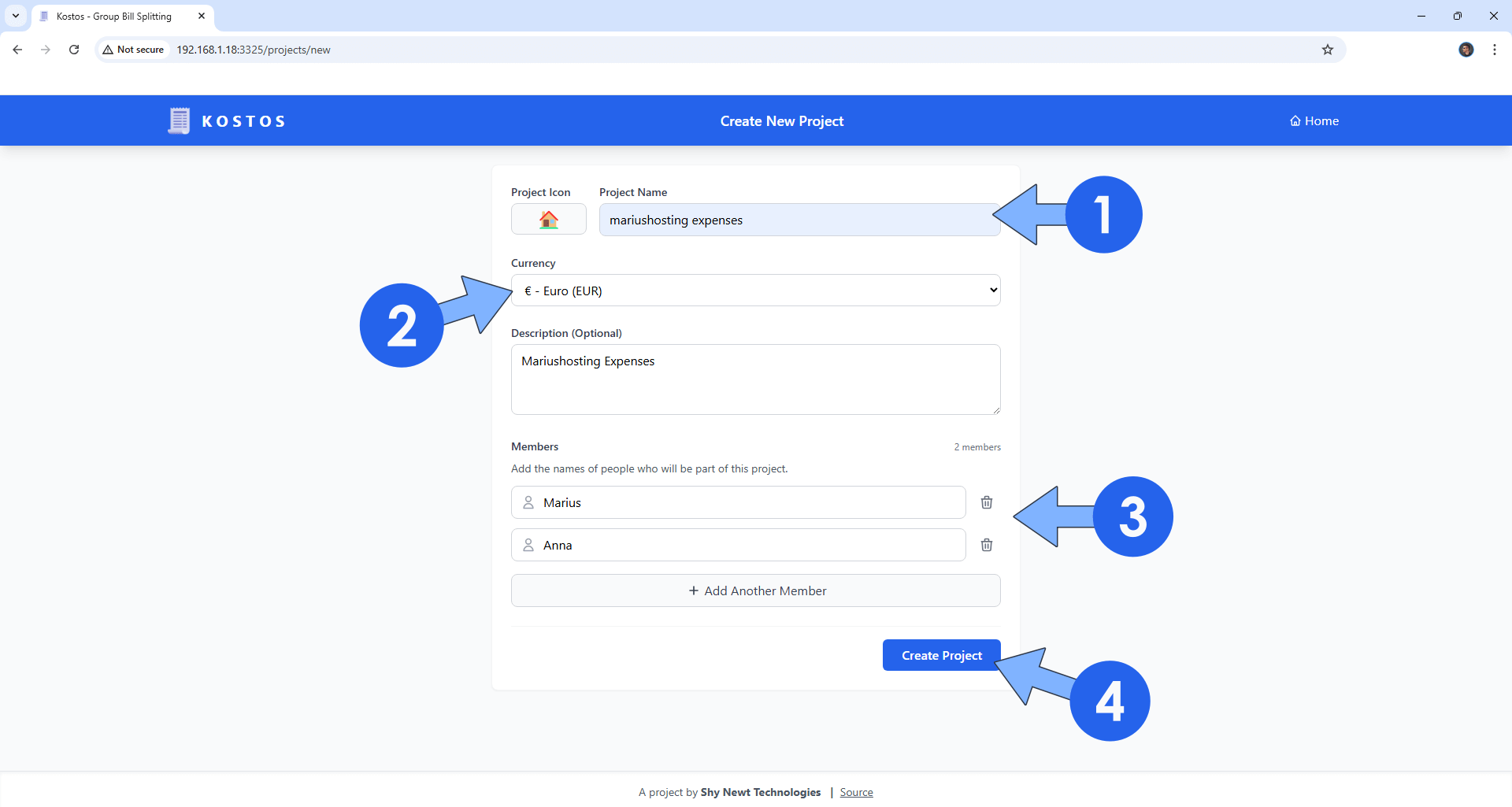
STEP 12
Add your first Expense! Your expenses at a glance!
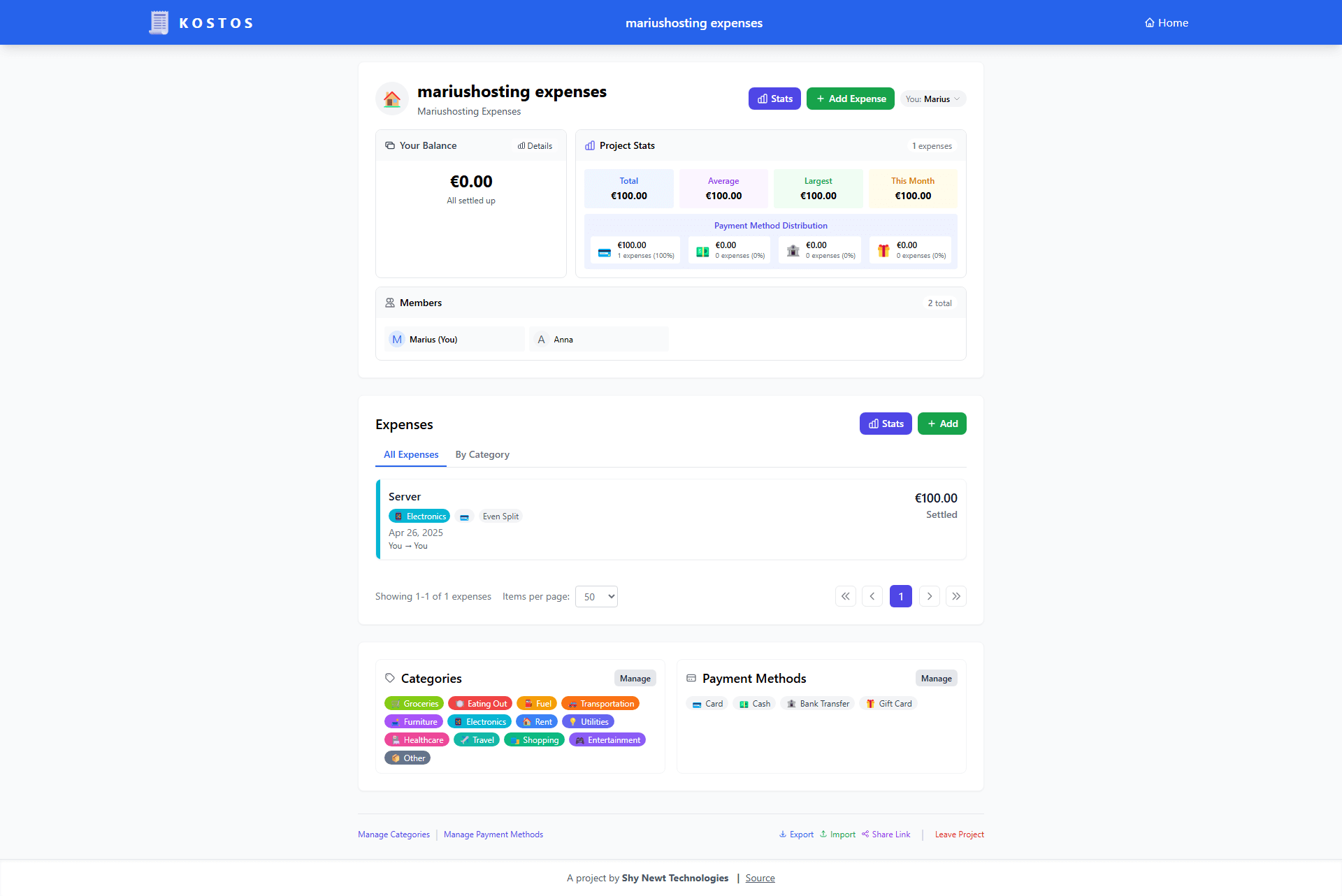
STEP 13
Your own statistics at a glance!
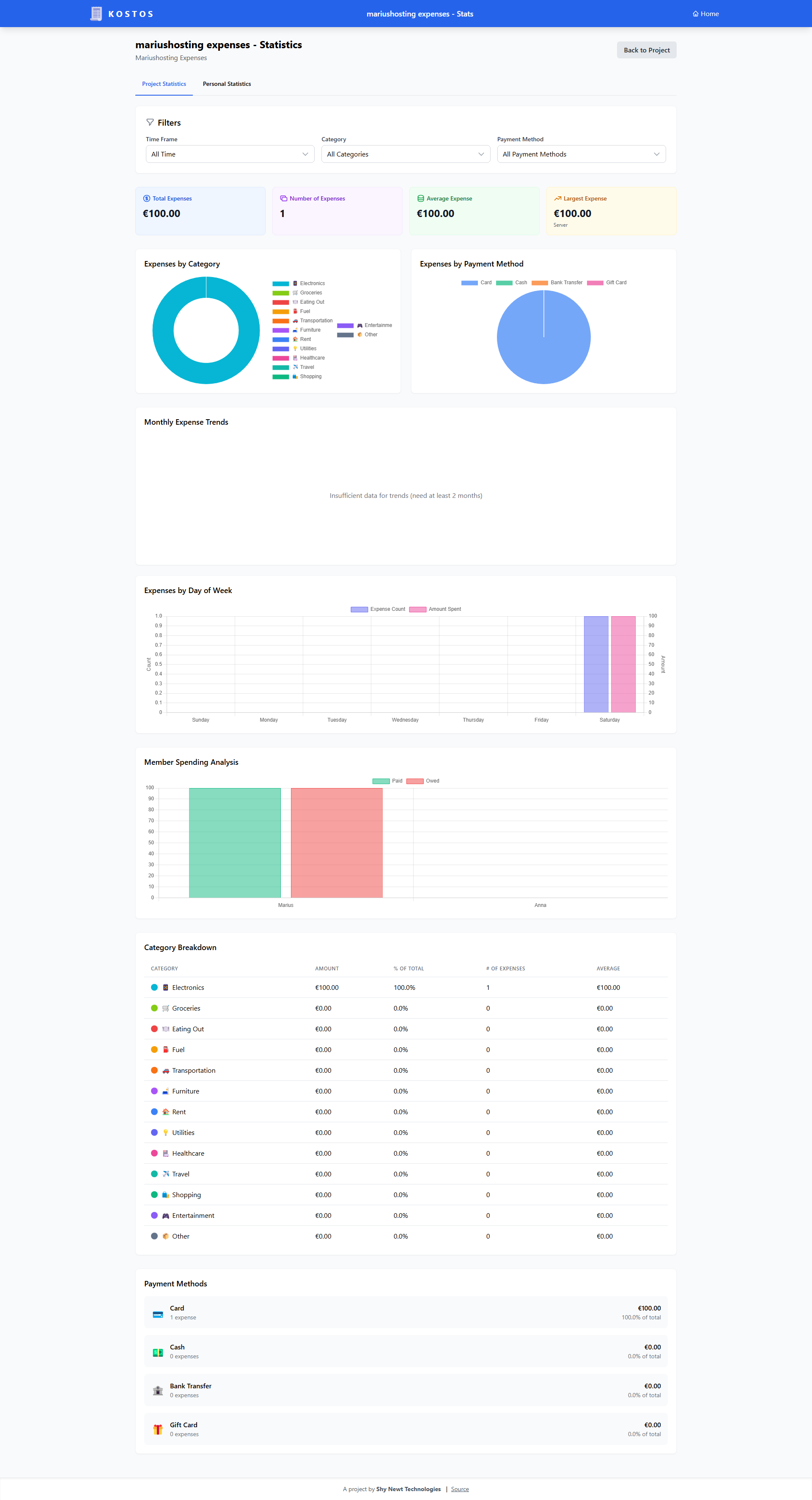
Enjoy Kostos!
If you encounter issues by using this container, make sure to check out the Common Docker issues article.
Note: If you want to run the Kostos container over HTTPS, check How to Run Docker Containers Over HTTPS. In order to make Kostos work via HTTPS, it’s mandatory to activate WebSocket.
Note: Can I run Docker on my Synology NAS? See the supported models.
Note: How to Back Up Docker Containers on your Synology NAS.
Note: Find out how to update the Kostos container with the latest image.
Note: How to Free Disk Space on Your NAS if You Run Docker.
Note: How to Schedule Start & Stop For Docker Containers.
Note: How to Activate Email Notifications.
Note: How to Add Access Control Profile on Your NAS.
Note: How to Change Docker Containers Restart Policy.
Note: How to Use Docker Containers With VPN.
Note: Convert Docker Run Into Docker Compose.
Note: How to Clean Docker.
Note: How to Clean Docker Automatically.
Note: Best Practices When Using Docker and DDNS.
Note: Some Docker Containers Need WebSocket.
Note: Find out the Best NAS Models For Docker.
Note: Activate Gmail SMTP For Docker Containers.
This post was updated on Tuesday / September 16th, 2025 at 1:25 PM
